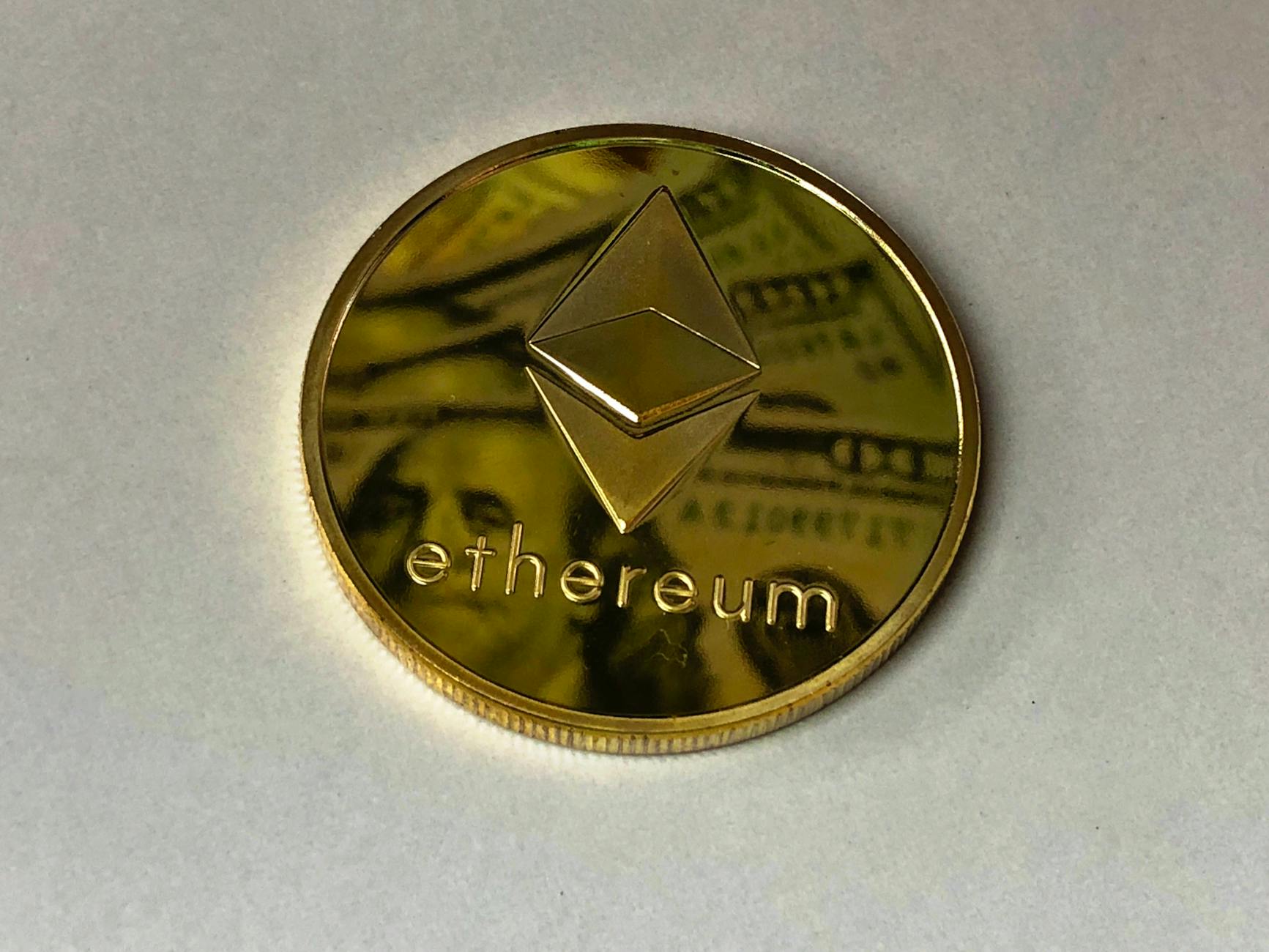The future of blockchain technology holds significant potential for transformative change across various industries. As we approach 2024 and beyond, the blockchain landscape is poised to undergo remarkable developments.
In this blog post, I will delve into 10 insightful predictions for the future of blockchain, offering a glimpse into the potential innovations and advancements that lie ahead.
Join me as we explore the exciting possibilities that await in blockchain technology!
Future of Blockchain – 10 Predictions for 2024 and Beyond
Here’s a table outlining 10 predictions for the future of blockchain technology as we look towards 2024 and beyond:
| Prediction | What to Expect? |
|---|---|
| 1. Increased Adoption in Traditional Finance | Blockchain is expected to be more widely adopted in banking and traditional financial sectors for improved security and efficiency in transactions. |
| 2. Expansion in Supply Chain Management | The use of blockchain in supply chain management will likely grow, providing greater transparency and traceability of products. |
| 3. Growth in Decentralized Finance (DeFi) | DeFi platforms will continue to expand, offering more decentralized financial services and challenging traditional banking systems. |
| 4. Advancements in Blockchain Interoperability | Improved interoperability between different blockchain systems will facilitate smoother data and asset exchange across platforms. |
| 5. Rise of Blockchain in Healthcare | Blockchain will be increasingly used in healthcare for secure medical records management and drug traceability. |
| 6. Enhanced Privacy and Security Features | Developments in blockchain technology will likely focus on enhancing privacy and security, addressing current vulnerabilities. |
| 7. Integration with Internet of Things (IoT) | Blockchain will become more integrated with IoT, providing secure and scalable frameworks for managing connected devices. |
| 8. Greater Regulation and Standardization | The regulatory landscape for blockchain and cryptocurrencies will evolve, with more standardized frameworks emerging globally. |
| 9. Expansion of Blockchain in Voting Systems | Blockchain could be used to create more secure and transparent voting systems in elections, reducing the risk of fraud. |
| 10. Emergence of New Blockchain Platforms | New blockchain platforms are expected to emerge, offering more efficient, scalable, and user-friendly solutions for various applications. |
These predictions reflect the ongoing evolution of blockchain technology and its potential impact across different sectors.
The Surge of Cross-Chain Collaboration
The interoperability of blockchain networks has emerged as a crucial factor in unlocking the technology’s full potential. As we look ahead to the future of blockchain, one of the most significant developments is the surge of cross-chain collaboration.

This phenomenon is reshaping the landscape of decentralized applications and the broader blockchain ecosystem.
Interoperability Protocols Take the Lead
Interoperability protocols, such as Polkadot and Cosmos, are at the forefront of driving cross-chain collaboration. These protocols enable different blockchains to communicate and transact with one another, overcoming the limitations of isolation that have traditionally hindered blockchain networks. Interoperability protocols are paving the way for a more interconnected and efficient blockchain ecosystem by facilitating seamless interaction between disparate blockchains.
Benefits for Decentralized Finance (DeFi)
The surge of cross-chain collaboration holds immense promise for the decentralized finance (DeFi) sector. With interoperability, DeFi platforms can leverage assets and liquidity from multiple blockchains, fostering a more diverse and robust financial ecosystem. This interconnectedness not only enhances the accessibility and utility of DeFi applications but also mitigates the risk of a single point of failure, thereby fortifying the overall resilience of decentralized financial systems.
 Photo by Morthy Jameson
Photo by Morthy Jameson
Bitcoin’s Economic Model Evolution
The economic model of Bitcoin has undergone significant evolution, shaping its future trajectory. As the cryptocurrency landscape continues evolving, several key factors influence this evolution.
The Rise of Transaction Fees
Bitcoin’s economic model has seen a shift in the reliance on transaction fees as a source of revenue for miners. With the reduction in block rewards over time, transaction fees have grown in importance, incentivizing miners to prioritize transactions with higher fees. This has led to reconfiguring the economic incentives within the Bitcoin network, impacting the dynamics of transaction processing and confirmation.
Innovations Within the Bitcoin Protocol
In response to the evolving economic landscape, innovations within the Bitcoin protocol have aimed to address scalability, efficiency, and fee optimization. Layer 2 solutions such as the Lightning Network have emerged to facilitate off-chain transactions, reducing the burden on the main blockchain and offering faster, more cost-effective payment channels.
Additionally, advancements in the development of smart contracts on Bitcoin have opened new possibilities for decentralized finance (DeFi) applications, expanding the utility and economic potential of the network.
Advancements in Blockchain Scalability
As the adoption of blockchain technology continues to expand, the need to address scalability challenges becomes increasingly imperative. Advancements in blockchain scalability have seen notable progress, with innovative solutions shaping the future landscape of blockchain networks.
Layer 2 Solutions and Their Impact
Layer 2 scaling solutions have emerged as pivotal in addressing blockchain scalability. By offloading specific transaction processing tasks from the primary blockchain, layer 2 solutions effectively alleviate congestion and enhance overall scalability.
Notable examples include state and payment channels, which enable off-chain transactions while upholding the security of the underlying blockchain. This approach leads to enhanced transaction throughput, reduced fees, and expedited confirmation times. Projects such as the Lightning Network for Bitcoin and Raiden Network for Ethereum exemplify the potential of layer 2 solutions in achieving heightened scalability.
Sharding and Parallel Processing
Sharding presents an innovative approach to bolster blockchain scalability by fragmenting the network into smaller, manageable shards capable of processing transactions independently. This strategy enables parallel processing, significantly elevating the throughput and scalability of blockchain networks. For instance, Ethereum 2.0 is actively pursuing sharding implementation to achieve increased scalability while maintaining robust security and decentralization.
 Photo by RDNE Stock project
Photo by RDNE Stock project
Regulatory Changes and Their Impact on Blockchain
As the blockchain industry evolves, regulatory changes play a pivotal role in shaping its future. Let’s explore the global trends in blockchain regulation and how regulatory compliance will significantly influence the trajectory of blockchain technology.
Global Blockchain Regulation Trends
The regulatory landscape for blockchain technology varies across different countries, with some embracing it while others exercise caution or impose outright bans. This disparate approach creates uncertainty for businesses and investors operating in the blockchain space. Uniform global regulations are lacking, contributing to the complexity of compliance and operations in the evolving blockchain ecosystem.
How Regulatory Compliance Will Shape Blockchain
Regulatory changes can potentially enhance investor protection, mitigate market volatility, and facilitate integration with traditional financial systems. By enacting stringent laws, regulators aim to safeguard investors from fraudulent activities and illicit behavior in the blockchain industry. This emphasis on compliance and security fosters trust among investors, paving the way for increased institutional participation in the market.
In addition, clear regulatory frameworks contribute to market stability by addressing the volatility often associated with cryptocurrencies. Establishing transparent oversight systems and rules can attract risk-averse individuals and traditional financial institutions, ultimately reducing market manipulation and stabilizing prices within the blockchain space.
Furthermore, as regulatory frameworks solidify, integrating cryptocurrencies into conventional financial institutions becomes more viable. Partnerships between blockchain businesses and traditional financial entities, such as banks and payment processors, are facilitated by regulatory changes. This integration can broaden the acceptance of cryptocurrencies in daily transactions, improve liquidity, and streamline conversions between cryptocurrencies and fiat currency.

In navigating regulatory changes, it’s crucial to anticipate and address potential obstacles. While regulatory improvements can bolster the blockchain industry, overly burdensome regulations may stifle innovation and drive operations to unregulated areas. Striking a balance between regulation and innovation is essential to prevent hindrances to technological progress.
International cooperation among regulatory bodies is imperative, considering the decentralized nature of cryptocurrencies. Collaborative efforts on a global scale can establish uniform standards, promote cross-border trade, and mitigate regulatory arbitrage, contributing to a more cohesive regulatory environment for blockchain technology.
Blockchain in Enterprise: Greater Adoption
Blockchain technology is rapidly gaining momentum in the enterprise landscape, with an expected market growth of $23.3 billion by 2023. This remarkable growth is attributed to blockchain’s unique advantages, including decentralized business operations, transaction verification, and data security, which drive the need for widespread adoption in enterprises.
Use Cases in Supply Chain and Logistics
Blockchain is revolutionizing supply chain and logistics by providing transparent, secure, and immutable tracking of goods throughout the supply chain. It offers real-time visibility into the movement of products, reduces fraud, and ensures compliance with regulations. For example, companies can utilize blockchain to authenticate the origin and journey of products, streamline customs clearance, and optimize inventory management, leading to increased efficiency and reduced operational costs.
Blockchain Integration in Healthcare
Integrating blockchain technology in healthcare holds immense potential for improving data security, interoperability, and patient privacy. By leveraging blockchain, healthcare organizations can create a secure and unified platform for storing and sharing patient records, ensuring the integrity of medical data, and enhancing the efficiency of clinical trials and research. Additionally, blockchain-powered solutions can streamline claims processing, reduce instances of medical fraud, and empower patients to have greater control over their health information.
 Photo by David McBee
Photo by David McBee
Blockchain and the Environment
Blockchain technology has revolutionized various industries, offering transparency, security, and efficiency. However, concerns have emerged regarding its environmental impact. Fortunately, innovative approaches are being developed to address these concerns and promote sustainability.
Eco-friendly Blockchain Innovations
Efforts to mitigate the environmental impact of blockchain technology have led to the emergence of eco-friendly innovations. One notable development is the transition from proof-of-work to proof-of-stake consensus mechanisms. As exemplified by Ethereum’s “The Merge,” this transition aims to significantly reduce energy consumption associated with blockchain operations. These eco-friendly advancements demonstrate a conscientious approach to technological innovation, aligning with the global push for sustainable practices.
The Push for Sustainable Cryptocurrency Mining
In addition to consensus mechanism updates, there is a growing push for sustainable cryptocurrency mining practices. This involves exploring alternative energy sources and implementing energy-efficient mining technologies. The cryptocurrency community is actively seeking solutions to reduce the carbon footprint associated with mining operations, aiming to create a more sustainable and environmentally conscious approach to blockchain-based asset generation.
By championing eco-friendly innovations and sustainable mining practices, the blockchain community embraces a pivotal role in shaping a greener and more sustainable future for technology and finance.
The Growth of Decentralized Autonomous Organizations (DAOs)
In blockchain technology, Decentralized Autonomous Organizations (DAOs) are slated to play a pivotal role in the future. DAOs represent a revolutionary shift in governance, investment, and funding mechanisms, offering a transparent, secure, decentralized framework that operates without traditional intermediaries.
DAOs in Governance
DAOs in governance are set to reshape the way decisions are made. By leveraging blockchain technology, DAOs enable a peer-to-peer decision-making process, fostering a more inclusive and democratic approach to governance. This decentralized model allows individuals to participate in decision-making processes directly, eliminating the need for centralized authorities.
Investment and Funding Through DAOs
In the context of investment and funding, DAOs are poised to disrupt traditional models. DAOs provide transparent and efficient investment opportunities through smart contracts and decentralized decision-making. This empowers individuals to participate in funding ventures and projects without the barriers imposed by traditional financial institutions.
 Photo by David McBee
Photo by David McBee
The Expansion of Non-Fungible Tokens (NFTs)
NFTs Beyond the Art World
Non-fungible tokens (NFTs) have evolved beyond the art world and are gaining traction in various industries. While initially associated with digital art and collectibles, NFTs are now being utilized to represent various assets, including virtual real estate, music, videos, and even tweets. The unique and immutable nature of NFTs has sparked interest in sectors seeking to authenticate and trade digital assets securely. This expansion demonstrates the potential for NFTs to revolutionize ownership and trading across diverse digital ecosystems.
 Photo by Pixabay
Photo by Pixabay
The Role of NFTs in Identity Verification and Asset Management
Due to their unique attributes and transparency, NFTs play a crucial role in facilitating identity verification and asset management. By tokenizing physical assets such as real estate or intellectual property, NFTs enable secure and transparent transactions, mitigating the risk of fraud and unauthorized duplication.
Additionally, NFTs can be leveraged to certify digital identities, enhancing authentication processes and offering a decentralized approach to identity management. As NFT adoption expands, their application in enabling verifiable ownership and secure asset management is poised to transform various industries.
Security Developments in Blockchain
Blockchain technology has been a game-changer in secure and transparent transactions. As we look into the future of blockchain, security developments are paramount in ensuring this revolutionary technology’s continued trust and reliability.
Quantum Computing and Blockchain Security
The emergence of quantum computing poses both a threat and an opportunity for blockchain security. While quantum computing has the potential to break traditional encryption methods, it also opens the door to quantum-resistant cryptographic algorithms.
As we venture into the future, addressing the implications of quantum computing on blockchain security will be pivotal in safeguarding the integrity of transactions and data immutability.
Enhancements in Smart Contract Audits
Smart contracts are integral to blockchain operations, automating and executing agreements without the need for intermediaries. However, vulnerabilities in smart contracts can pose significant security risks. In the future, advancements in smart contract audits will play a crucial role in ensuring the reliability and security of these self-executing contracts.
Enhanced auditing processes will mitigate the potential for exploitation and enhance the overall security posture of blockchain-based transactions.
Blockchain Education and Workforce Development
Blockchain technology is rapidly transforming various industries, and educational institutions need to incorporate it into their academic curriculums. The demand for blockchain professionals is steadily increasing, and students must have the necessary knowledge and skills to meet this demand.
Blockchain in Academic Curriculums
In response to the growing relevance of blockchain technology, many academic institutions are integrating blockchain-related courses into their curriculums. Students can now enroll in programs covering decentralized ledgers, smart contracts, cryptography, and the practical applications of blockchain in different sectors.
Academic institutions are preparing students to excel in the rapidly evolving digital economy by providing access to such courses.
 Photo by Morthy Jameson
Photo by Morthy Jameson
Demand for Blockchain Professionals
As blockchain continues to disrupt traditional industries, the demand for skilled professionals in this field is at an all-time high. Companies across various sectors are actively seeking individuals with expertise in blockchain development, implementation, and maintenance. This growing demand presents a significant opportunity for students and professionals to pursue careers in blockchain technology, offering lucrative prospects and the chance to drive innovation in the digital landscape.
By embracing blockchain education and workforce development, we are laying the foundation for a future where blockchain technology is seamlessly integrated into diverse industries, shaping the digital landscape for years to come.
Conclusion
The future of blockchain is poised to be transformative, with significant advancements and widespread adoption anticipated in the coming years. The potential applications of blockchain technology across various industries are vast, and its impact on businesses and society is expected to be profound. As we look ahead to 2024 and beyond, it is clear that blockchain will continue to revolutionize finance, healthcare, supply chain management, and many other sectors. Integrating blockchain with other emerging technologies, such as AI, IoT, and quantum computing, will further expand its capabilities and potential. Moreover, the evolution of regulations and standards around blockchain will shape its trajectory, paving the way for increased trust and mainstream acceptance. With these developments in mind, it is evident that blockchain is set to play a pivotal role in shaping the future of our digital world.


Pingback:Top 9 Business Ideas In The USA For 2023: Promising Opportunities - TopTut.com
Pingback:Facebook: Collective Naivete & No Alternative - TopTut.com
Pingback:Stake Review: Beginners Guide To An Online Crypto Casino - TopTut.com
Pingback:Future of Blockchain – 10 Predictions for 2024 and Beyond – Lorelei Web